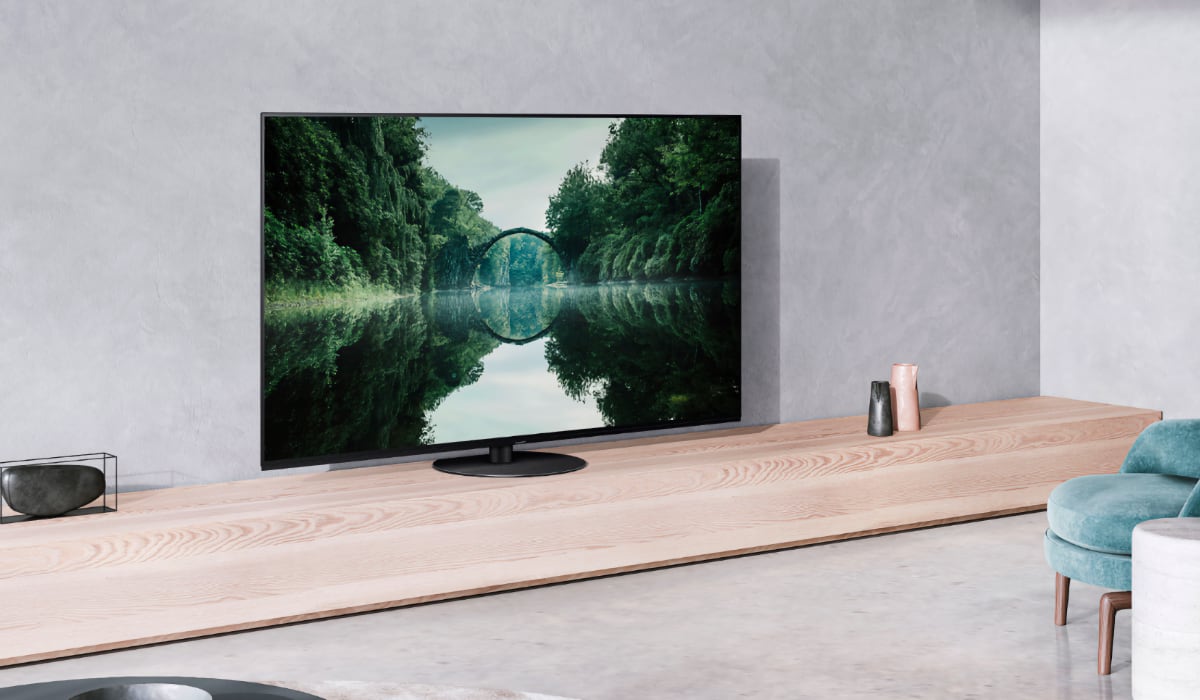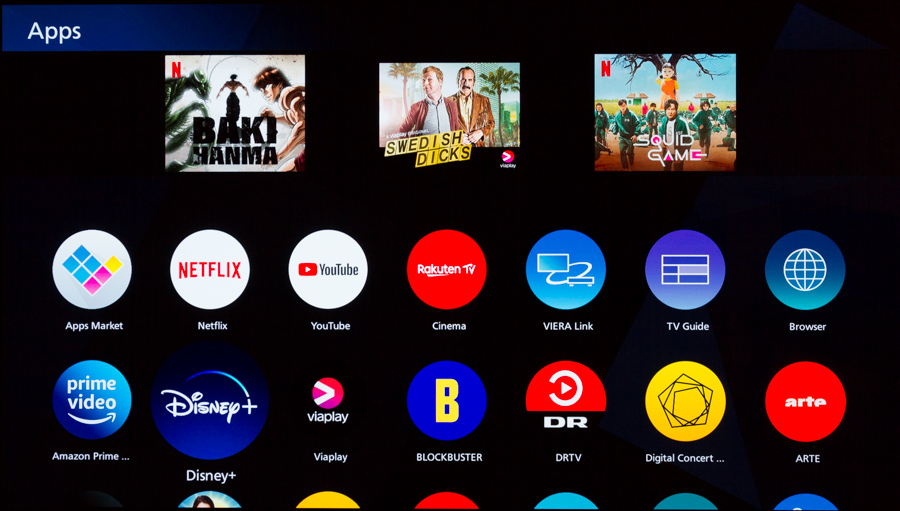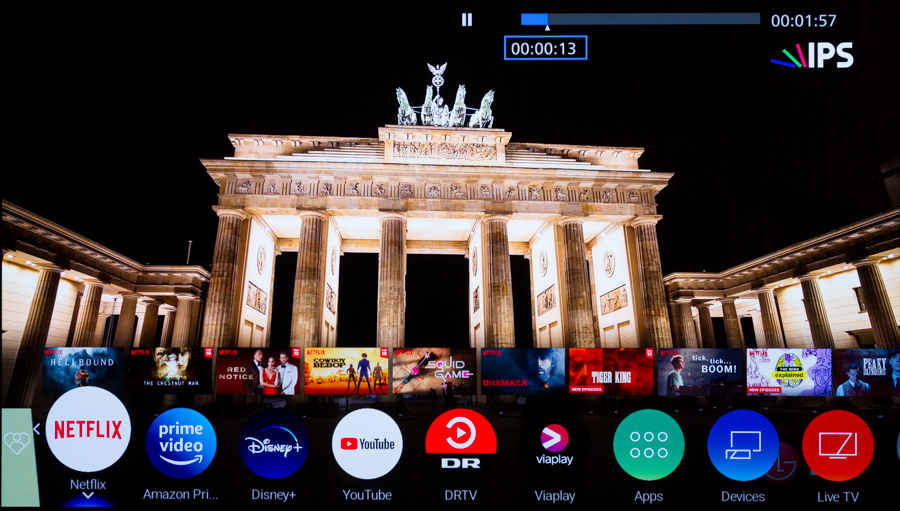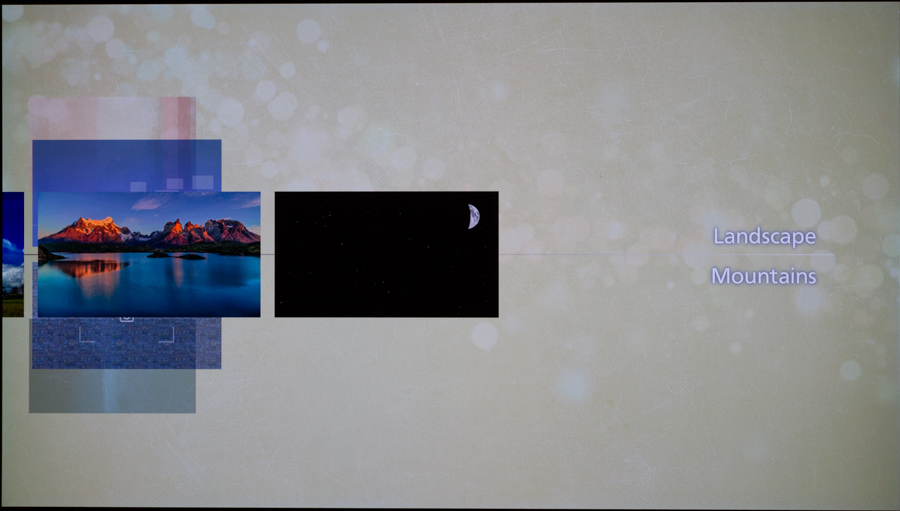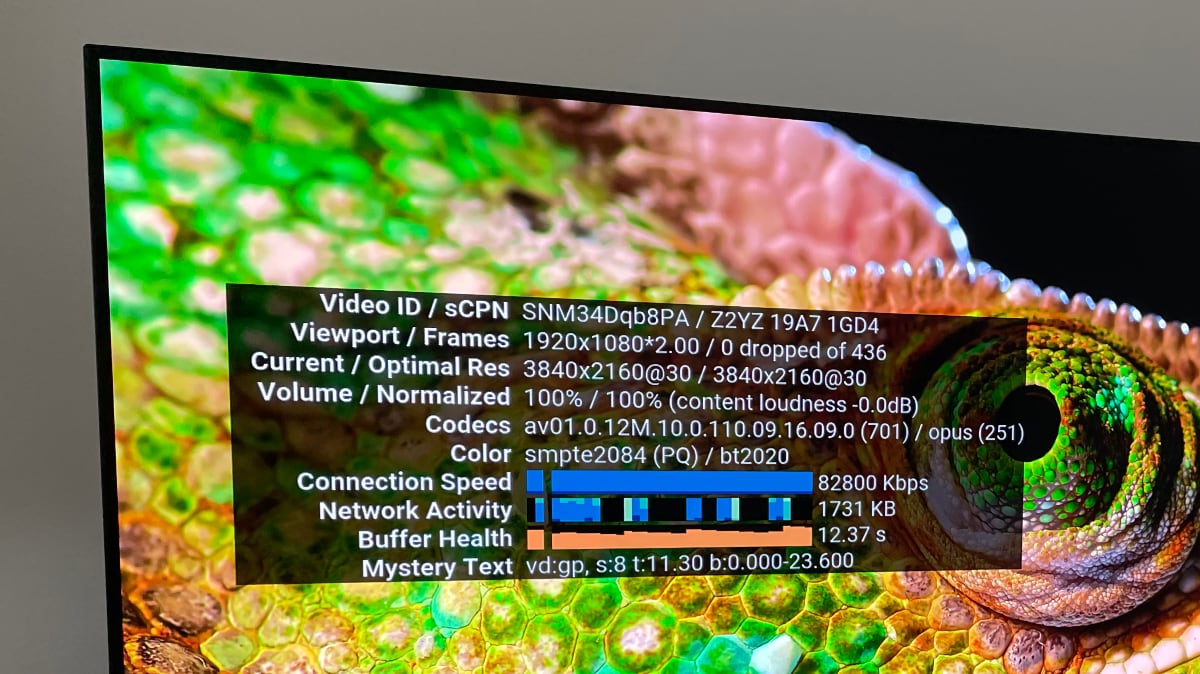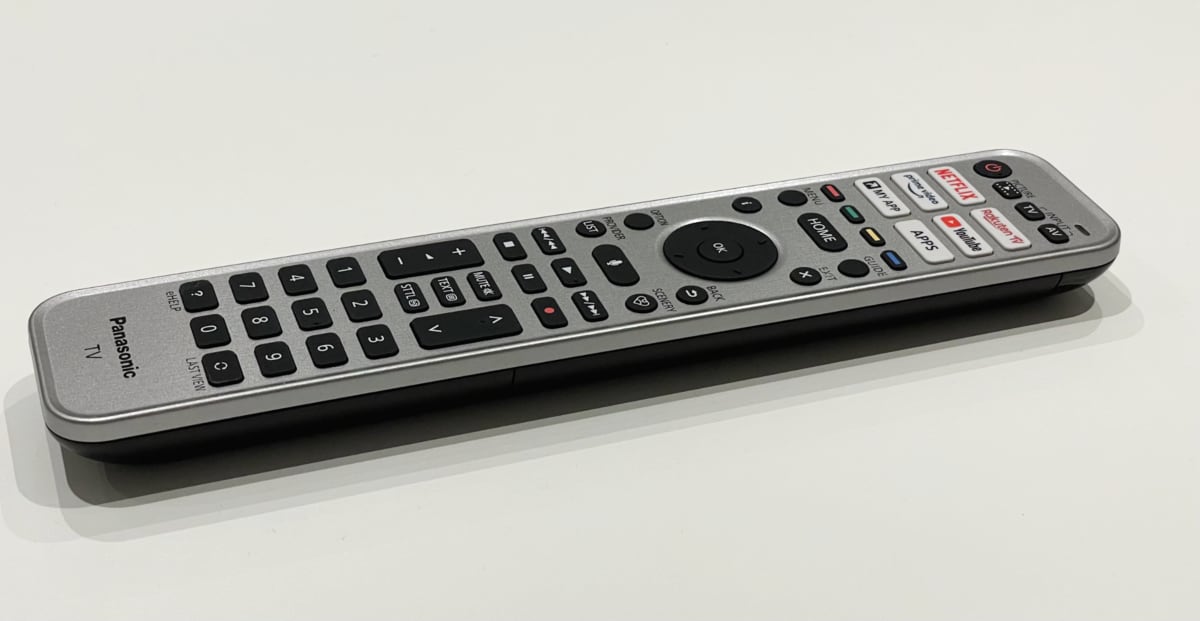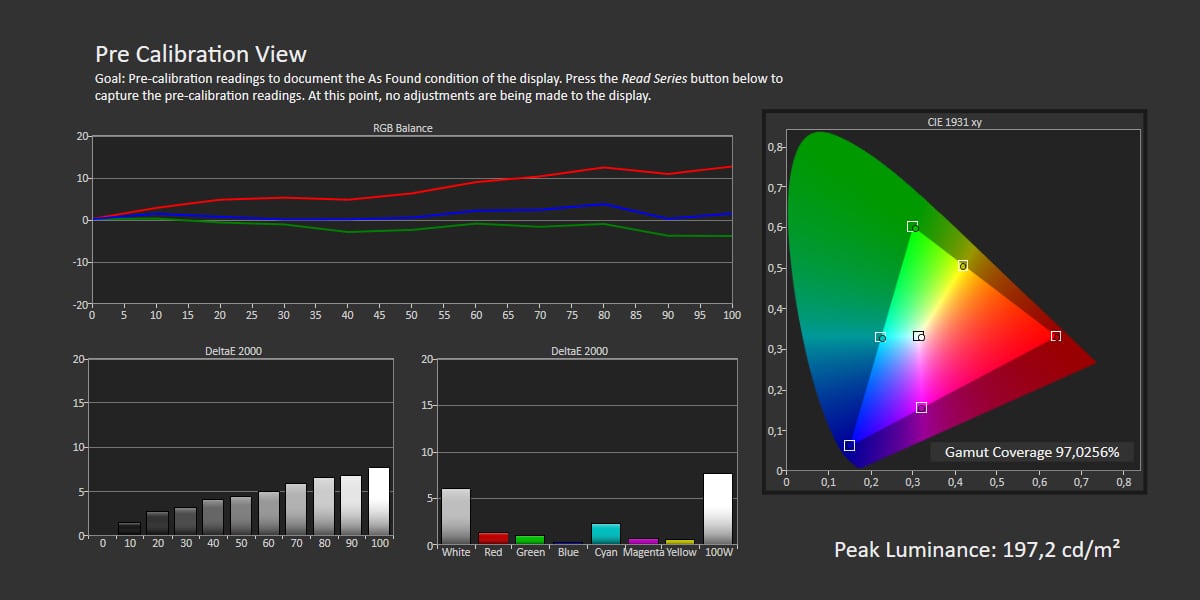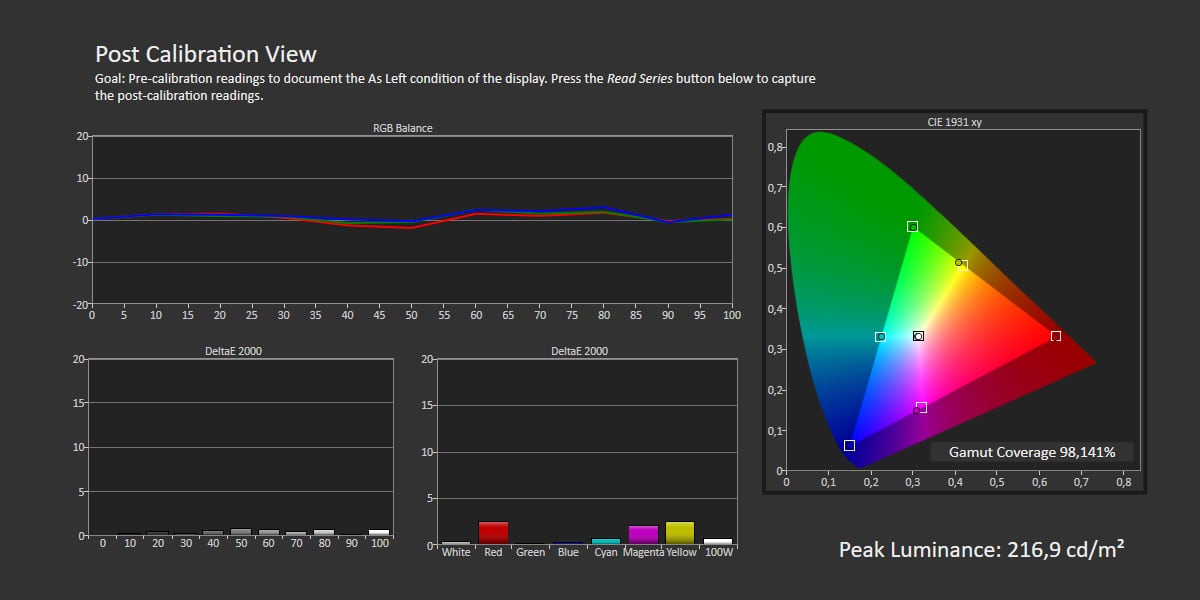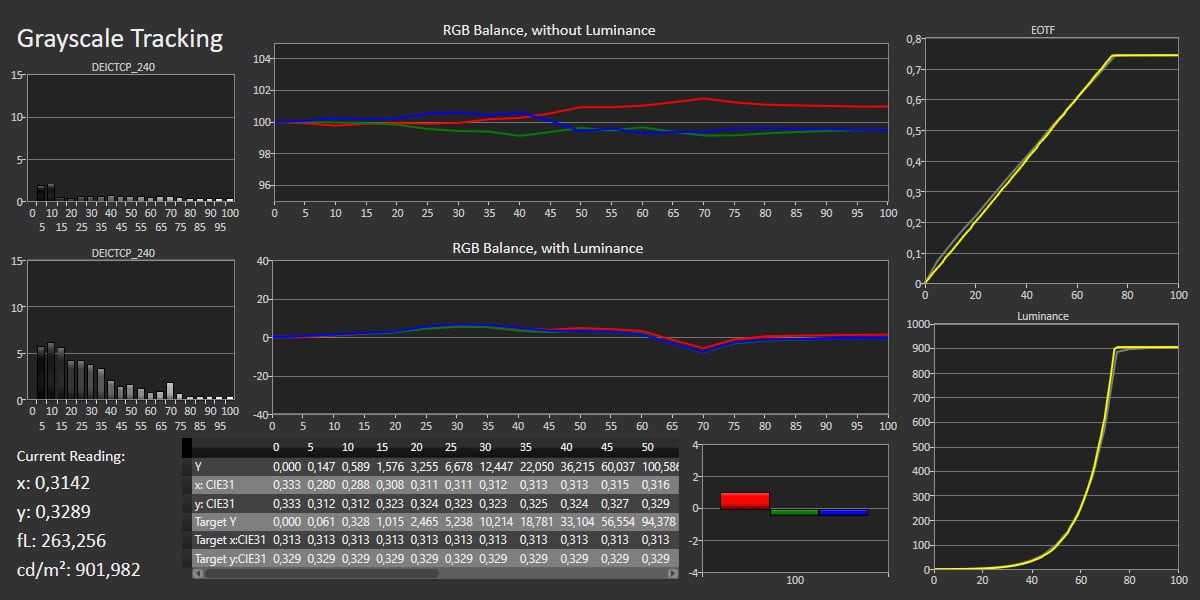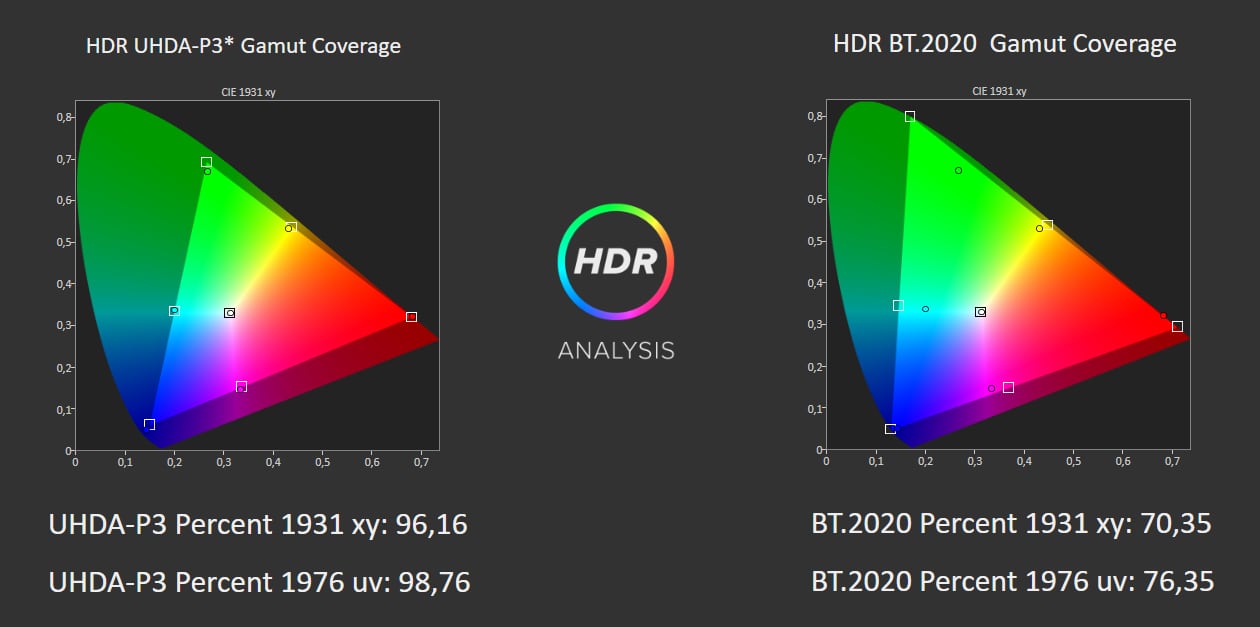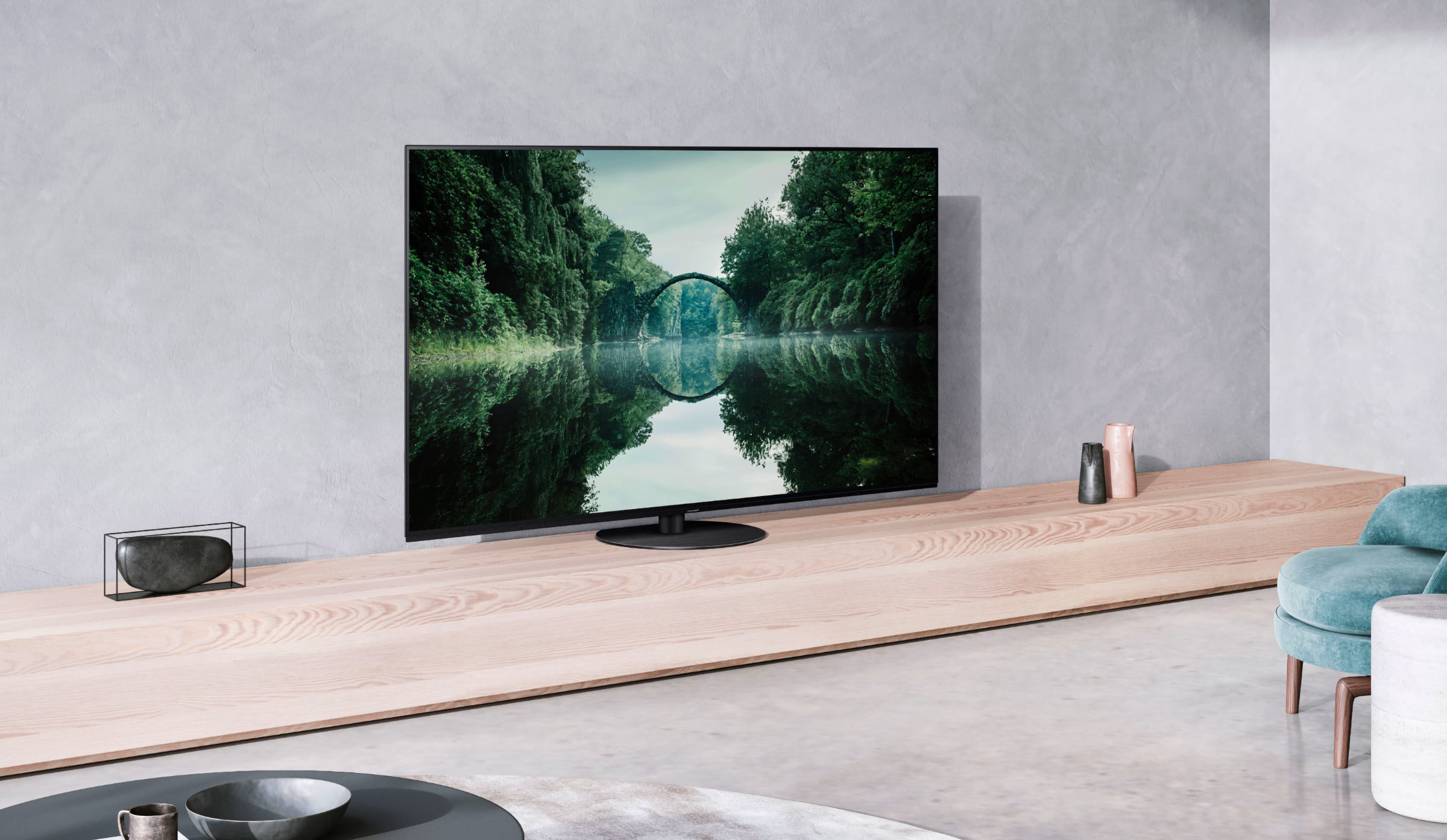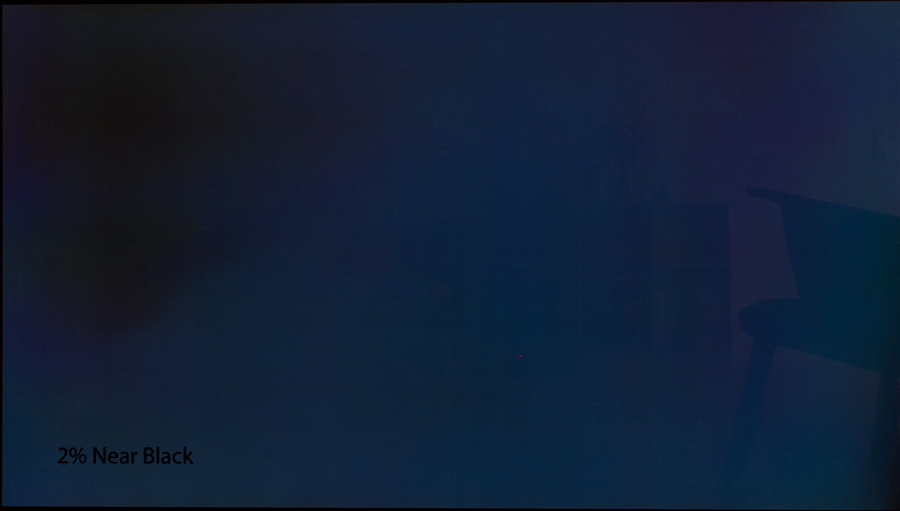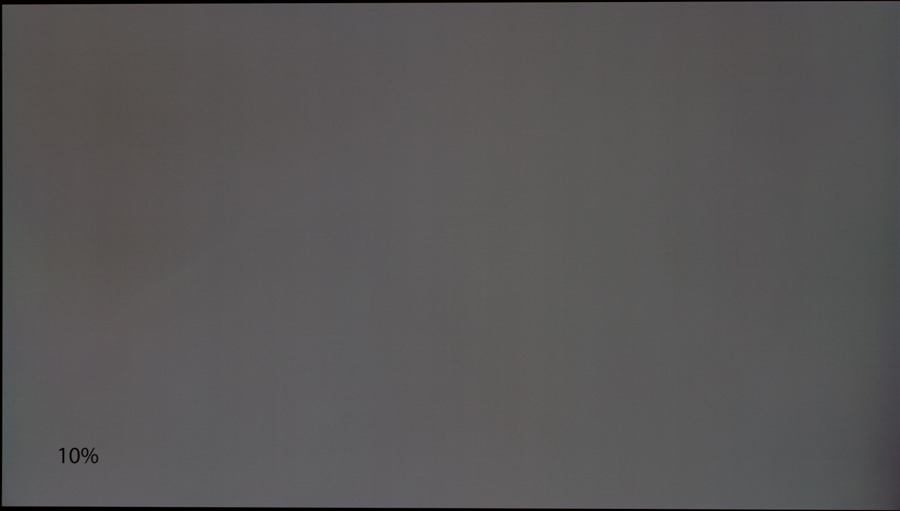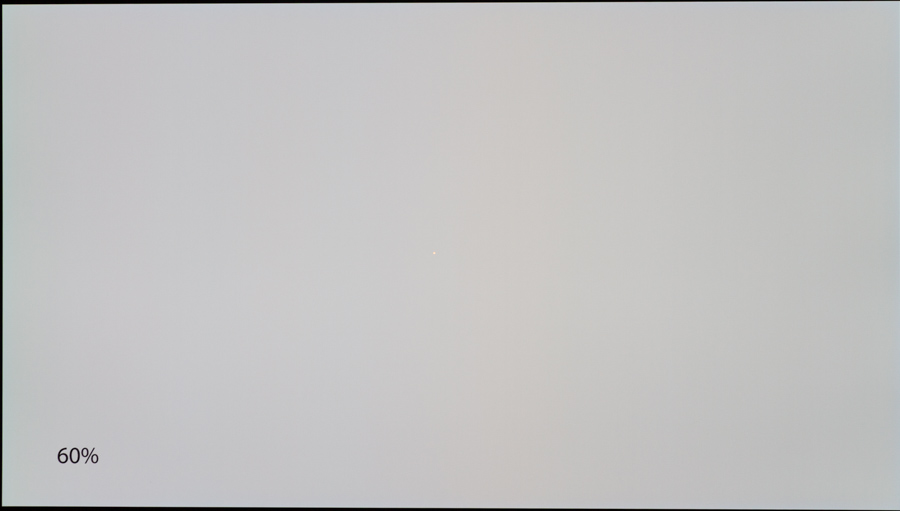Review: Panasonic JZ1500 OLED
If you are a gamer, Panasonic has good news this year with the addition of two HDMI 2.1 ports as well as support for AMD FreeSync and HDMI VRR, two variable refresh rate systems. The two HDMI 2.1 ports support 4K 120Hz input (Panasonic likes to call it HFR) with HDR10 – but not Dolby Vision (maximum 4K 60Hz with or without VRR). The VRR range is 48 to 120 Hz, which is a little high for the lower cap but not uncommon on VRR-compatible TVs. Note that you must update to the latest firmware as described here and enable '4K 120Hz Bypass Mode' plus 'VRR' mode manually from the picture settings menu (and switch off again after gaming to regain access to many picture settings). 4K120 is processed and reproduced at full resolution. There are, however, still some issues, i.e. flicker and unstable blacks, in VRR mode. This relates to LG Display's OLED panel so it affects all OLED TVs on the market at this time. Our testing equipment cannot measure VRR input lag at this time but in 60Hz input mode (which represents the large majority of PS4, PS5, Xbox One and Xbox Series S/X games) we measured input lag to just under 15 ms. It is not the lowest input lag measured on a 4K TV but still quite low and an improvements over last year's 21 ms input lag. You still get lower input lag with a PC monitor and a mouse, but 15 ms should satisfy the majority of console games playing with a controller.For the past couple of years, Panasonic's flagship TVs have been equipped with an advanced Dolby Atmos speaker system, meaning that if you wanted Panasonic's best picture quality you would need to buy the full package. With JZ1500 you can get Panasonic's best picture quality – same panel as the 2000 range – at a more affordable price without the full speaker system. JZ1500 also comes packed with the latest features such as Dolby Vision, Dolby Atmos, Filmmaker Mode, and HDMI 2.1. Panasonic JZ1500 is available in 48, 55 and 65 inches but note that the 48-inch version does not feature the brighter OLED panel. We have tested the 65-inch model. Also read: Panasonic 2021 TV line-up
First impressions | Functionality | Calibration | Measurements | Picture quality | Conclusion | Debate Price and retailers:
First impressions
Unless you are looking at Panasonic's flagship TV, it can be to distinguish between this year and last year's models. At first glance, JZ1500 looks like 2020's HZ1000 that we tested last year. It has a center-aligned circular stand that lets you rotate the TV from side to side. The stand provides a stable foundation under the OLED TV but as mentioned last year rotation is perhaps less relevant with today's OLED TVs as compared to LCD TVs with narrow viewing angles. You can enjoy the picture on an OLED TV from practically every angle. Except from the more discreet bottom frame the TV looks almost identical from the front to other OLED TVs on the market. On the back you will find a similar-looking connector panel to last year's HZ1000 and all ports point either down or to the side. Two HDMI ports now support HDMI 2.1 bandwidth (or FRL) for 4K120 and the latest firmware update unlocks the advertised features. However, one of the two HDMI 2.1 ports doubles as eARC port for audio output to externals sound systems like a soundbar or receiver, meaning that if you are planning to connect both next-gen game consoles you will have to decide between eARC or 4K 120Hz. Our JZ1500 sample produced a faint whistling sound from the power supply, which was audible from close distance during standby.User experience & features
Panasonic has started adopting Android TV in its more affordable TV ranges and it would appear that Android is moving up through the ranks (also available in the 8-series in 2021) but Panasonic is still relying on its in-house My Home Screen for high-end models including JZ1500. We cannot help but wonder if My Home Screen 6.0 will be the last iteration. One of the new features in My Home Screen 6.0 is 'My Scenery', which is a type of gallery mode. Although the concept is great and we have seen gallery modes implemented in various ways in LG, Samsung and Apple products, a static picture on-screen may not be the most optimal approach on an OLED TV. We feel more comfortable using Apple TV's video screensavers to keep the risk of burn-in to a minimum. The My Home Screen user interface has not changed much in 2021 and still relies on a bottom row of app icons and customizable shortcuts. A few streaming apps have deeper integration to let them feature content on the homescreen on top of the app row. Unfortunately, most apps still lack this feature and considering that the API has been available for years now, we would not expect things to change in a major way. Panasonic has opened My Home Screen to banner ads and unfortunately it is becoming a trend in Smart TVs that increasingly have ads popping up in menus, search results, and more. It is a bad practice. Imagine if ads suddenly appeared between icons on your Android smartphone or iPhone homescreen – not many users would accept it. Ads are currently limited to My Home Screen's dashboard so luckily you can, for now, steer clear of them by using the bottom menu only. My Home Screen recently gained Apple TV+ and Disney+ apps but HBO Max is still not available. The Disney+ app now supports 4K Dolby Vision and Dolby Atmos but the Apple TV+ app is not as feature-complete – no Dolby Vision – and it does not provide access to the iTunes movie library either. The user interface is not running as smoothly as on the Apple TV box either. There is no support for AirPlay 2 or Chromecast either so buyers of JZ15000 – and other Panasonic TVs – have no option to cast video content to the screen and consequently no way to watch HBO Max without buying an external stick or box, which is something we would still recommend despite the recent addition of Apple TV+ and Disney+. In terms of format support, 2021 Panasonic TVs supports AV1 decoding (see photo) and it has been enabled in the YouTube app to let you stream 4K HDR videos in the new, more efficient video format. The underlying menu structure has not changed either so enthusiasts still have access to tons of advanced picture settings, although it may seem a little daunting to the average user. If you own the equipment or if you pay for someone to calibrate the TV you can get very accurate results but LG is still a step ahead with 3D LUT calibration. Once again this year, I want to emphasize that Game mode can now be enabled for each picture mode to let you enjoy low latency and accurate colors at the same time – more on gaming in the picture quality section. The TV was tested with Sonos Arc, Sony HT-A7000 and an Apple TV 4K. HDMI CEC / eARC worked as intended but we did encounter a few sporadic dropouts on the HDMI link from TV to soundbars – something we have also encountered with TVs from other brands.Operation
The remote control that comes bundled with JZ1500 is neither the metal remote from last year's HZ2000 nor the cheap plastic clicker than came with HZ1000. The buttons feel right with good tactility and travel distance. It has a good fit and weight even though its front cover is plastic, but like all other Panasonic remotes it has myriad of buttons, most of which have lost relevance in a modern context with streaming services. The confusing 'Back' and 'Exit' buttons remain in place and sometimes change function depending on where you are in menu system. As a consequence of muscle memory, I often found myself pressing the 'Exit' button, which would close the app, instead of 'Back' because this is how the buttons work in other areas of the menu system. The remote control has four sponsored buttons (Netflix, Rakuten, Amazon Prime and YouTube) in addition to a customizable 'My App' button, which is what we really want. There is also a dedicated button to open the app drawer even though we have the bottom menu for that. Voice commands to Google Assistant and Amazon Alexa can be routed to Panasonic JZ1500 through an external smart speaker or device. There is no option to pass voice commands to the TV directly. In conclusion, the remote control provides good comfort and quality but is still too chaotic, which drags down the overall user experience. If I personally had to pick between a low-quality remote control with a few simple buttons or a high-quality remote with too many unnecessary buttons, however, I would still pick the latter.TV & audio
A couple of years ago, Panasonic refreshed its TV Guide and related menus. It was a welcomed change in look and function – menus no longer looks something out of the 80's. If you are still mainly watching TV channels over broadcast networks, Panasonic is also one of the few remaining brands to offer two CI ports to let the TV decode two channels at once for recording or picture-by-picture. With Dolby Atmos support in JZ1500 you can pull down Dolby Atmos from compatible streaming apps for output via HDMI eARC. However, unlike the flagship JZ2000 and its predecessors there is not much to gain from Dolby Atmos if you are using the built-in speaker system in JZ1500. JZ1500's built-in speakers fall within our expectations for this type of TV. Voices are generally clear but the speakers lack bass as well as fullness in midtones, so they have a tendency to sound rumbling if you turn up the volume. It is possible to use the headphone port to connect an external subwoofer but if you are spending money on extra equipment our recommendation would be to pick a good soundbar instead. For normal usage the speakers are adequate but for movies and games they will probably fall short in most homes. Whether you should buy JZ2000 instead of JZ1500 will depend on the price delta at the given time. For our thoughts on Panasonic's speaker system in the 2000 series check our HZ2000 review from 2020.Calibration
JZ1500 was launched as a less expensive version of Panasonic's flagship TV (JZ2000) with the same brighter OLED panel but without the full speaker system, meaning that it should deliver the same picture and brightness level. As mentioned earlier, Panasonic's tools for picture adjustment are some of the most comprehensive and advanced in the industry. Panasonic also supports Calman AutoCal, which can help you automate the calibration process (if you buy a compatible meter and the Calman software) but it still limited to the user-facing picture settings, unlike LG where AutoCal has access to the TV's underlying systems.Panasonic TVs are still overflowing with picture modes, most of which are unnecessary and only adds to the clutter. We would recommend Panasonic to simplify its approach to picture modes, which can be done without compromising the experience for advanced users. It is not obvious for anyone that he/she should be using the 'Professional' mode (with or without the Game function enabled) for the most accurate colors. I've yet to meet anyone who changes picture mode depending on the content he/she is watching and since there is little to help consumers make an educated choice here, it can be a frustrating experience for everyone other than enthusiasts. We used the two 'Professional' picture modes as the starting point for calibration, and picked Professional1 which has higher overall brightness. Professional2 is the darker of the two and is also used as the foundation under 'Filmmaker Mode'. It is pre-calibrated for dark room viewing with 100 nits maximum brightness in SDR. It took only a few adjustments to tweak the picture close to reference level. Since JZ1500 has the same OLED panel as the 2000 series, we had expected it to reach 1000 nits peak brightness in HDR mode – like GZ2000 from 2019 and HZ2000 from 2020 – but in our testing it came in just short of that target. We measured peak brightness to roughly 920 nits, which is still more than what LG and Sony manage to squeeze out of the same panel. As seen in our measurements below, JZ1500 comes close to matching the excellent performance of Panasonic's 2000 models that we have reviewed in past years.Other picture modes
Click the title to expand the view
Normal (SDR) Dynamic (SDR) Professional 2 (SDR) Game (SDR) Filmmaker Mode (SDR) Normal (HDR) Dynamic (HDR) Game (HDR) Filmmaker (HDR) Measurements
In our "measurements" section we include all measurements and our suggested calibration settings. If you want to learn more about our test methodology click here. Note: Starting with our LG C1 review this year, we have implemented a new method for measurement of average power consumption in SDR and HDR, meaning that earlier measurements are not 1:1 comparable. The new method will be used in all TV reviews going forward.Note: We include calibration settings only for SDR, not HDR. For our calibration we have deactivated the ambient light sensor that automatically adjusts the backlight setting according to your environment. You may prefer to have it enabled.Picture quality
Our calibration section revealed that our sample of JZ1500 reaches 920 nits peak brightness for HDR, which means that JZ1500 is one of the brightest OLED TVs out there although it still came in slightly behind the 2000 series. 920 nits is more than what we measured on LG C1, LG G1, and Sony A90J earlier this year, and with close to 1000 nits it has more headroom than the other OLED TVs to accurately reproduce highlights in content mastered to 1000 nits, even if it is not ideal. On the other hand it still falls a little short in fullscreen where we measured brightness to around 165 nits, which is not on par with OLED TVs like LG G1. It would seem that Panasonic has prioritized peak brightness over fullscreen brightness in its quest to customize the panel and cooling. If we dive in to some of the finer details, we noticed a few minor issues with reproducing white-to-black gradients where Sony and LG provide more effective tools to smoothen out gradients. We also spotted a little banding on our test patterns but not something that was evident in most normal situations. I took the liberty to stress-test the OLED panel for a 10-hour work session for which JZ1500 was used as a monitor. Afterwards, I closely examined the panel but found no traces of menus or other static elements. Of course, a 10-hour session should not be problematic but there were no traces of temporary retention either. We often see temporary retention on OLED panels after long calibration sessions with test patterns and JZ1500 exhibited a bit (the outlines of the test patterns remained on the panel for a little while) but nothing problematic, although it seems to show a little less resilience than the 2000 series from 2020. However, it would take a side-by-side test to fully determine if there is a difference. Panasonic has support for HDR10, HDR10+, HLG, and Dolby Vision but for most users only HDR10 and Dolby Vision are relevant. Like last year's models JZ1500 also has HDR10+ Adaptive as well as Dolby Vision IQ, which means that the Dolby Vision system can take advantage of the light sensor to measure the amount of light in your surroundings in order to compensate on-screen. As mentioned in other reviews this will affect the light curve (EOTF) and also the way content is presented, so it is not always desirable but it may help if you mostly watch TV in a bright viewing environment – just know that it is not how the movie was intended to look. Dolby Vision IQ is a separate mode in the menu. You can also pick 'Dolby Vision Dark' and 'Vivid' but the latter should be avoided as it produces wildly wrong colors – not something that is consistent with the Dolby Vision promise. Picture quality in both SDR and HDR is excellent, as expected from an OLED TV, and color accuracy is spot-on regardless of the type of content. For parts of the test, JZ1500 was paired to Apple TV 4K so I can access my local library of HD movies and the much larger library of 4K HDR movies on iTunes. I rewatched movies like Blade Runner, Max Mad, and The Hobbit (remastered) as I know them well but the more recent launch of Apple TV+ has also provided access to a good selection of movies and series in some of the highest video streaming quality. It is a joy to behold on JZ1500 – same goes for UHD Blu-ray discs. Natural-looking skin tones, bright and intense highlights, and pixel-level control of luminance and color in combination produce wonderful pictures and makes JZ1500 a good companion for UHD Blu-ray and a media box like Apple TV 4K, which has the largest – and a fast-growing – selection of 4K HDR content. As opposed to my own Sony OLED TV, Panasonic does not suffer from the Dolby Vision issue (darker) on HDMI sources, which makes me even happier to pair to an external player or console. One area where Panasonic JZ1500 cannot match Sony is in the area of motion. Panasonic's IFC (Intelligent Frame Creation) system handles motion compensation and is designed to help smooth out jerky video caused by low frame rates, which is more apparent on OLED due to the extremely fast response time, but its error rate is higher than Sony's MotionFlow system. Even at the lowest setting we spotted too many picture artefacts, something that is not visible to the same degree on Sony's OLED TV. If you want to avoid any motion smoothing, there is also an option to engage BFI (Black Frame Insertion), which inserts black frames to help "reset" the human eye's visual memory but unfortunately BFI results in a significant loss of brightness, especially in HDR, so it is not an optimal solution. The best way to improve motion in general, including motion resolution, would be to significantly increase the frame rate in source content. The 24Hz bug, which in rare cases caused microstutter in video playback on previous Panasonic OLED TVs, has been resolved on JZ1500. Our JZ1500 sample had some slightly darker splotches in one side that could be observed on a grey background at low brightness (5 IRE) but we did not observe color tinting or other issues on brighter colors. As always, these things vary from one sample to the next so our observations should be taken only for what they are; a sample of one. LG Display's OLED panels have come a long way since the first generation but you can still encounter inhomogeneity issues. The presence of the dark splotches is a very minor issue as it could be observed only in a dark room and only on very dark solid shades of grey.
Conclusion
With JZ1500 Panasonic aimed to create a TV with reference picture quality but without the bulky Dolby Atmos speaker system from the flagship 2000 series. Our measurements and evaluations reveal that Panasonic has largely succeeded although JZ1500 falls just shy of matching the last two generations of the 2000 series that we have tested. Note that the 48-inch JZ1500 does not feature the brighter OLED panel.Ad:
The Smart TV platform in JZ1500 has not changed much and amongst the TV players Panasonic still has the weakest platform and smallest selection of streaming apps. Apple TV+ and Disney+ were recently added but HBO Max and other apps are still missing. An external media player should considered if you are planning to use JZ1500 for streaming video.
New features this year include 2x HDMI 2.1 ports with support for 4K120 HFR as well as VRR (variable refresh rate) for gamers. Panasonic has managed to reduce input lag by roughly 30%, which again is welcomed news for gamers.
Movie buffs will appreciate JZ1500's Dolby Atmos support with HDMI eARC output for transmitting audio to an external sound system as well as its picture quality that is some of the very best you can find anywhere on the consumer market.
Comparing JZ1500 to the competition, big brother JZ2000 is also worth taking into account as it is not much more expensive than JZ1500 at this time – of course prices will fluctuate over the year. In the end the decision should probably depend mainly on your plans for TV audio. In the same price class you will also find the LG G1, which has a cleaner and more elegant design and more smart features, as well as the more expensive Sony A90J, which has a more feature-rich operating system. Tough competition.
!
Change in test parameters: In 2018, we made a change to a test parameter that relates to the features score, following years of poor practice in the TV industry. Unless a manufacturer of a given "Smart TV" can provide FlatpanelsHD with assurance that the TV platform will be updated to the next major version, the feature score will be lowered by 10 points. We hope that our initiative can help highlight the problem, start a discussion, and change the practice.
Panasonic has not been able to give us such a guarantee for My Home Screen.
Panasonic has not been able to give us such a guarantee for My Home Screen.
Price and retailers:
Color accuracy & processing
Perfect black
Viewing angles
HDR picture almost matches 2000 range
HDMI 2.1 & eARC
MyHomeScreen not receiving updates
TV/media menus outdated
IFC system not on par with Sony's

